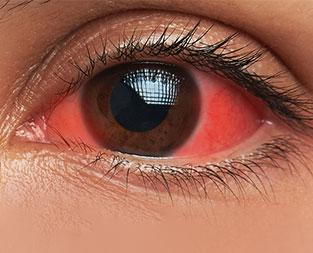Viral conjunctivitis, commonly known as eye flu, experiences a significant surge during the monsoon season, particularly in urban areas. This surge is attributed to a confluence of factors that create an ideal breeding ground for the virus. The high humidity characteristic of monsoon weather allows the virus to survive longer on surfaces, increasing the risk of transmission. Furthermore, the increased rainfall drives people indoors, into closer proximity in schools, offices, and public transport, facilitating the spread of infection. Contaminated water from road splashes, waterlogging, and stagnant pools also contributes to the rise in eye flu cases, exposing eyes to various infectious agents. Finally, the fluctuating weather patterns during monsoon season can weaken the immune system, making individuals more susceptible to viral infections like conjunctivitis.
The symptoms of eye flu typically begin with redness in one or both eyes, followed by persistent itching or burning. A watery or sticky discharge, often causing eyelids to stick together upon waking, is another common symptom. Redness of the eyelids, increased sensitivity to light, and even mild blurred vision can also occur. If both eyes become infected within two to three days, it strongly suggests a viral infection rather than an allergy or irritation. The highly contagious nature of viral conjunctivitis makes it easily transmissible through everyday activities such as sharing towels, pillows, or touching contaminated surfaces. This rapid spread underscores the importance of preventive measures and prompt treatment to curb outbreaks.
The duration of viral conjunctivitis typically ranges from seven to ten days. While the infection often clears up on its own, maintaining good hygiene is crucial to prevent secondary bacterial infections. Ignoring symptoms and continuing with regular activities, such as attending work, school, or the gym, poses a significant risk of spreading the infection to others. This highlights the need for responsible individual behavior in containing the spread of eye flu. Staying home when symptomatic and practicing meticulous hygiene are paramount in protecting the community.
Effective preventive measures can be implemented at home, work, and in public spaces to minimize the risk of contracting and spreading eye flu. At the workplace, ensuring easy access to hand sanitizers and disposable tissues promotes good hand hygiene throughout the day. Those infected should ideally work from home or take sick leave for three to four days to prevent transmission. Avoiding shared office equipment like printers, coffee machines, and keyboards, and practicing handwashing before and after using them, are also crucial.
In public areas, wearing sunglasses offers dual protection by shielding eyes from potential contaminants and serving as a reminder to avoid touching them unnecessarily. Opting for disposable tissues over washable handkerchiefs promotes better hygiene. It’s also advisable to avoid crowded swimming pools and potentially contaminated public restrooms during the monsoon season. Schools and workplaces should display advisory notices during peak monsoon periods, urging individuals with symptoms to take necessary precautions to prevent transmission. These collective efforts create a safer environment for everyone.
At home, similar precautions should be observed. Avoid sharing towels, pillows, or eye makeup. Regularly wash hands, especially after touching the eyes. If infected, isolate personal items to prevent spreading the infection to family members. These simple yet effective practices contribute significantly to containing the spread of the virus within households.
While eye flu may seem like a minor ailment, its highly contagious nature can lead to rapid outbreaks in various settings, disrupting daily routines and productivity. Ignoring the symptoms and neglecting proper hygiene can exacerbate the spread and potentially lead to secondary infections. The collective responsibility of individuals, communities, and institutions is paramount in controlling outbreaks. By adhering to simple precautions, practicing good hygiene, and promoting awareness, we can effectively mitigate the impact of eye flu during the monsoon season and maintain healthy eyes. The combination of individual responsibility and community-wide preventive strategies is key to minimizing the impact of this seasonal ailment. Prompt medical attention and adherence to prescribed treatment further contribute to a speedy recovery and prevent potential complications.


